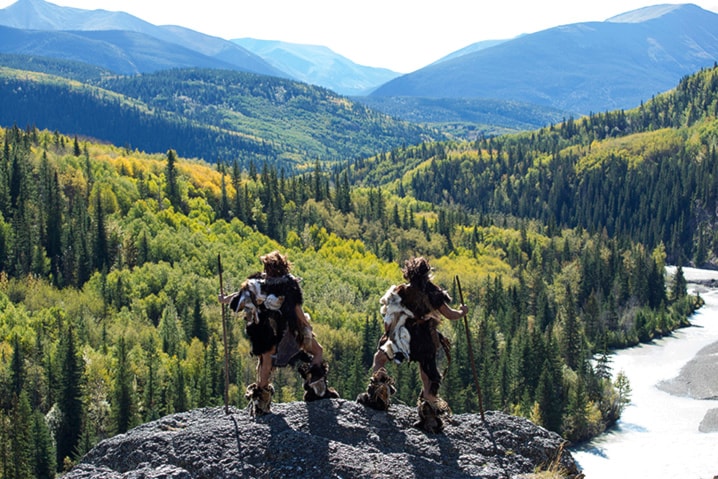Wait a minute, that Neanderthal looks familiar. ...
Under the sloped forehead and shaggy hair of a Neanderthal in the CBC documentary series The Great Human Odyssey is Central Alberta actor Brett Manyluk.
Manyluk, who graduated from the Red Deer College Theatre Studies program in 1994, usually works behind as a camera operator on films, TV serials and commercials.
But he knew the director of photography on the Odyssey, so when a tall, muscular actor was needed to play a Neanderthal in the production, the six-foot-six Manyluk, who plays in several hockey leagues, was invited to step into the animal skin costume.
The Great Human Odyssey, directed by anthropologist Niobe Thompson, is a three-part documentary that explores the “unlikely survival and miraculous emergence of Homo sapiens as the world’s only global species.”
The second part of the series, which features Manyluk’s contribution, airs on the CBC on Thursday at 9 p.m.
It took five hours in the makeup chair for Manyluk to become transformed into a member of the early and extinct human group for the three-day shoot near Grande Cache, Alta. Makeup artist Travis Shewchuk had to make a full head cast to construct the wider forehead, nose, cheeks and chin. Ample facial hair was then applied.
The acting requirements weren’t exactly of Shakespearean proportions, admitted Manyluk. In fact, the 41-year-old Edmonton resident doesn’t have any dialogue in the film that casts Neanderthals in a new light.
Scientists now believe the early relatives of humans were a larger species, with big heads and big brains. Thompson notes in the documentary that new information indicates they were much more intelligent than previously thought, with the ability to fashion and work with rudimentary tools.
Manyluk’s craggy character, along with his Neanderthal friend, were filmed doing re-enactments like “opportunistic hunting” — chasing off trained wolves that had supposedly killed some prey the Neanderthals later appropriated.
Manyluk is proud to be associated with the production, which took three years of filming around the world (and also utilizes Otis the Medicine River Wildlife Centre’s “ambassador” owl in some scenes). He considers the doc to be a ground breaking, possible award winner. “It’s beautifully shot, with cutting-edge information. It’s a high-quality package.”
Among the information contained in the film is that scientific evidence suggests inter-breeding occurred between different kinds of early humans, and the co-mingling of these genes helped modern humans adapt to a multitude of climate zones.
As the Odyssey’s press kit states: “Our species survived to populate every corner of the planet, against all odds.”
Manyluk only acts about five per cent of the time in his film and television career (one of his speaking role was in the Alberta-made film Passchendaele). The rest of his time he works as a camera operator on many interesting projects, including the film Brokeback Mountain and the 3D feature The Young and Prodigious T.S. Spivet, directed by Jean-Pierre Jeunet (Amelie).
The graduate of River Glen School also returns to RDC on occasion to teach workshops for Motion Picture Arts students.
lmichelin@www.reddeeradvocate.com
